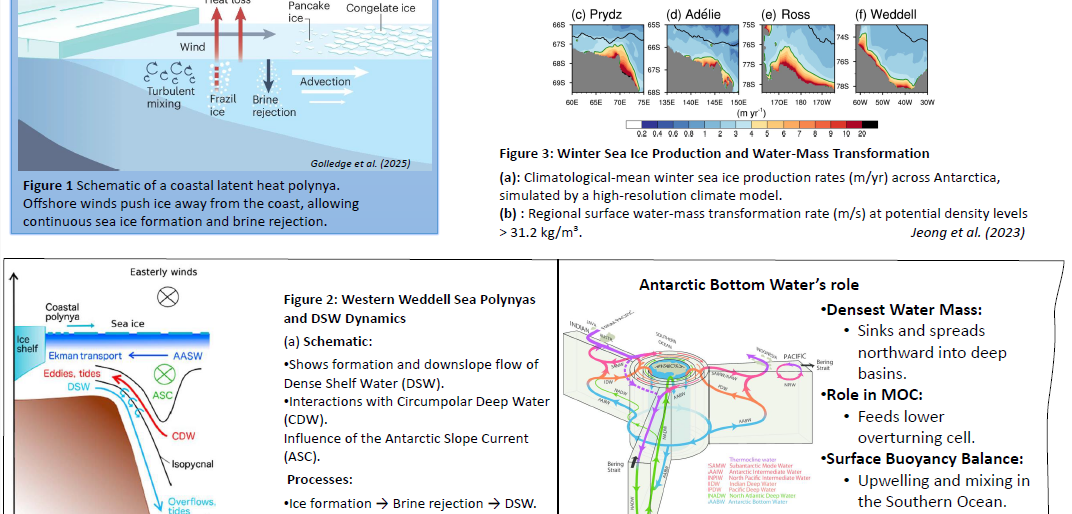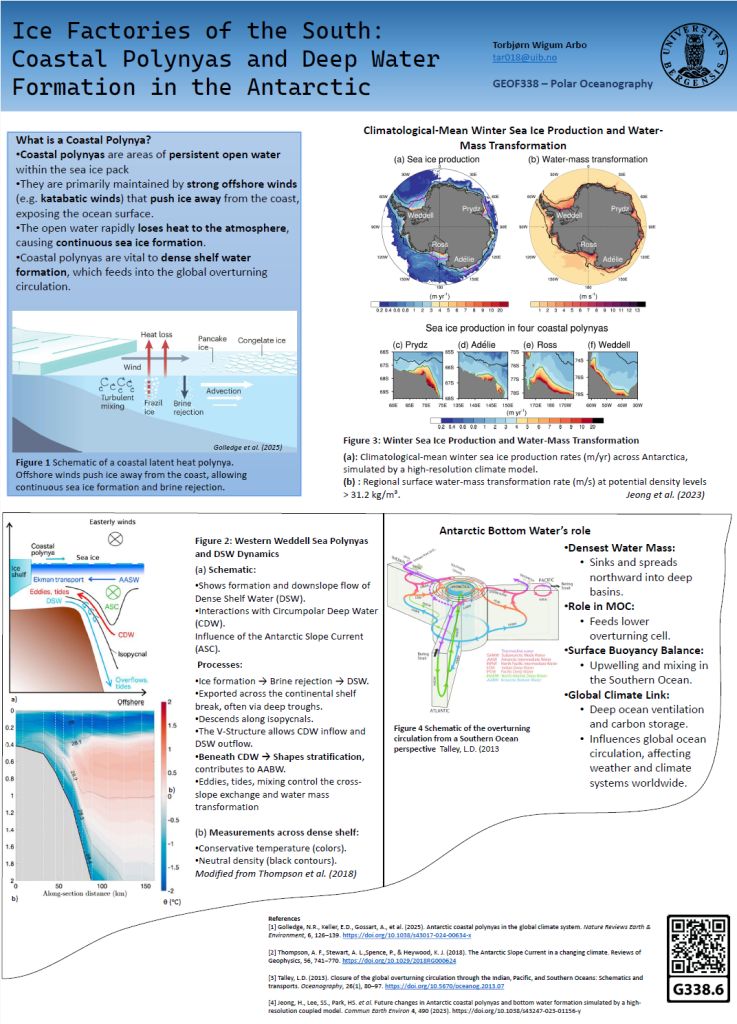Abstract
Coastal polynyas are persistent open-water areas surrounded by sea ice, predominantly found along the Antarctic coast. These polynyas form primarily due to strong offshore katabatic winds that continuously remove newly formed sea ice, exposing ocean water to extremely cold atmospheric conditions. Such rapid and continuous ice formation leads to significant brine rejection, a process where salt is expelled from freezing seawater, increasing the salinity and density of the water below. This denser water mass is termed Dense Shelf Water (DSW) and sinks (cascades) down the continental slope, directly contributing to the formation of Antarctic Bottom Water (AABW). AABW is the densest and coldest water mass circulating in the global ocean. Using the Weddell Sea as a key example, this poster explores the essential role of Antarctic coastal polynyas as critical ice-production sites and their significant impact on deep ocean circulation.


